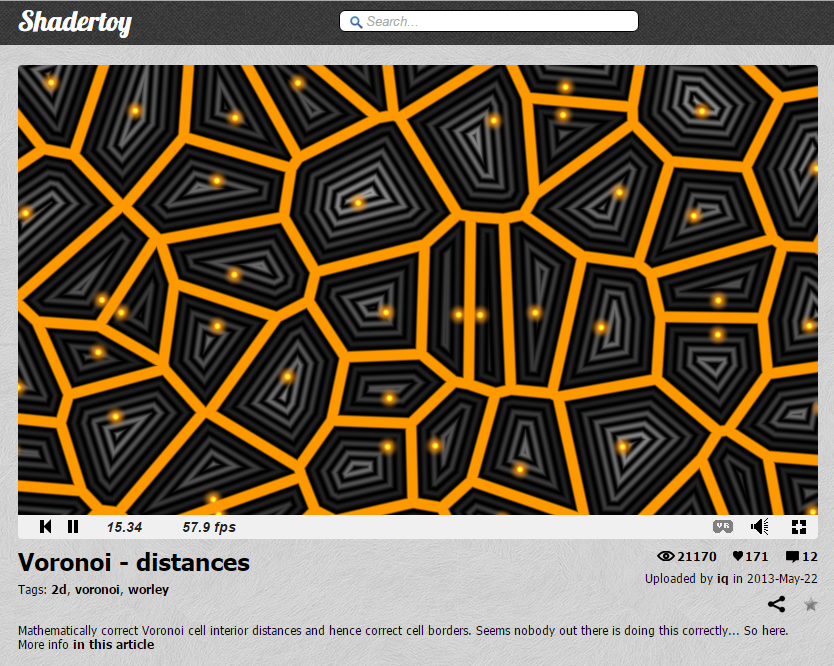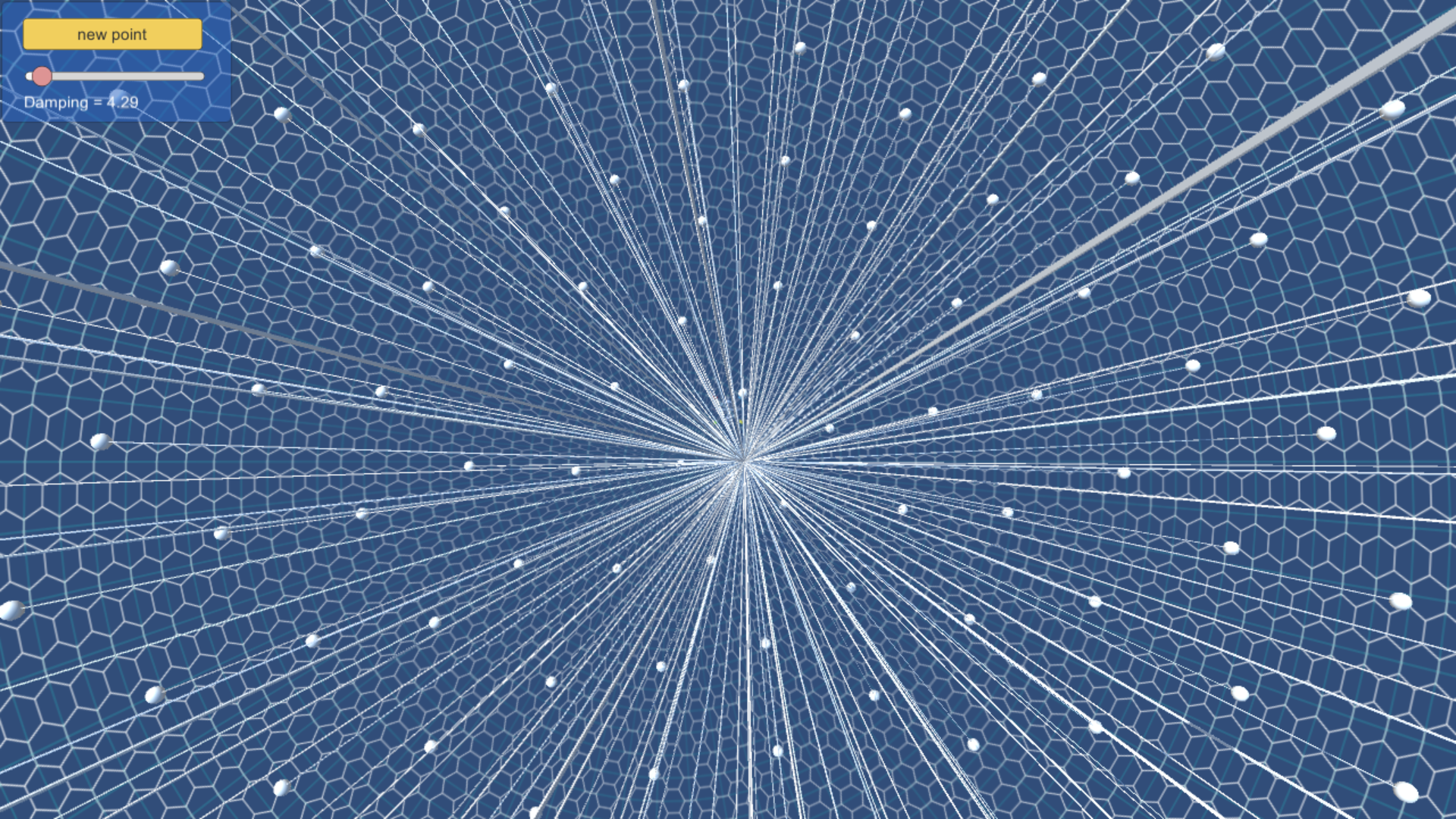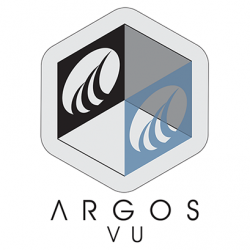


// Created by inigo quilez - iq/2013
// License Creative Commons Attribution-NonCommercial-ShareAlike 3.0 Unported License.
// I've not seen anybody out there computing correct cell interior distances for Voronoi
// patterns yet. That's why they cannot shade the cell interior correctly, and why you've
// never seen cell boundaries rendered correctly.
// However, here's how you do mathematically correct distances (note the equidistant and non
// degenerated grey isolines inside the cells) and hence edges (in yellow):
// http://www.iquilezles.org/www/articles/voronoilines/voronoilines.htm
#define ANIMATE
vec2 hash2( vec2 p )
{
// texture based white noise
return texture2D( iChannel0, (p+0.5)/256.0, -100.0 ).xy;
//procedural white noise
//return fract(sin(vec2(dot(p,vec2(127.1,311.7)),dot(p,vec2(269.5,183.3))))*43758.5453);
}
vec3 voronoi( in vec2 x )
{
vec2 n = floor(x);
vec2 f = fract(x);
//----------------------------------
// first pass: regular voronoi
//----------------------------------
vec2 mg, mr;
float md = 8.0;
for( int j=-1; j<=1; j++ )
for( int i=-1; i<=1; i++ )
{
vec2 g = vec2(float(i),float(j));
vec2 o = hash2( n + g );
#ifdef ANIMATE
o = 0.5 + 0.5*sin( iGlobalTime + 6.2831*o );
#endif
vec2 r = g + o - f;
float d = dot(r,r);
if( d<md )
{
md = d;
mr = r;
mg = g;
}
}
//----------------------------------
// second pass: distance to borders
//----------------------------------
md = 8.0;
for( int j=-2; j<=2; j++ )
for( int i=-2; i<=2; i++ )
{
vec2 g = mg + vec2(float(i),float(j));
vec2 o = hash2( n + g );
#ifdef ANIMATE
o = 0.5 + 0.5*sin( iGlobalTime + 6.2831*o );
#endif
vec2 r = g + o - f;
if( dot(mr-r,mr-r)>0.00001 )
md = min( md, dot( 0.5*(mr+r), normalize(r-mr) ) );
}
return vec3( md, mr );
}
void mainImage( out vec4 fragColor, in vec2 fragCoord )
{
vec2 p = fragCoord.xy/iResolution.xx;
vec3 c = voronoi( 8.0*p );
// isolines
vec3 col = c.x*(0.5 + 0.5*sin(64.0*c.x))*vec3(1.0);
// borders
col = mix( vec3(1.0,0.6,0.0), col, smoothstep( 0.04, 0.07, c.x ) );
// feature points
float dd = length( c.yz );
col = mix( vec3(1.0,0.6,0.1), col, smoothstep( 0.0, 0.12, dd) );
col += vec3(1.0,0.6,0.1)*(1.0-smoothstep( 0.0, 0.04, dd));
fragColor = vec4(col,1.0);
}

using UnityEngine;
using System.Collections.Generic;
using System.Collections;
using UnityEngine.UI;
public class PivotHolder : MonoBehaviour
{
List<Point_On_Sphere> pOS_List = new List<Point_On_Sphere>();
List<Rigidbody> rbList = new List<Rigidbody>();
Point_On_Sphere pOS_Inst;
List<Rigidbody> rbTmpList = new List<Rigidbody>();
public Text slideVal;
public Slider DampSlide;
public GameObject Point_Prefab;
public float ForceFactor = 1f;
public float dampfactor = 0.01f;
void Start ()
{
GetComponentsInChildren<Point_On_Sphere>(pOS_List);
GetComponentsInChildren<Rigidbody>(rbList);
foreach(Rigidbody rb in rbList)
{
rb.detectCollisions = false;
}
}
public void onButtonDown()
{
GameObject go;
go = (GameObject)Instantiate(Point_Prefab, Vector3.zero, Quaternion.identity);
go.GetComponent<Rigidbody>().detectCollisions = false;
go.GetComponentsInChildren<Rigidbody>(rbTmpList);
foreach (Rigidbody rb in rbTmpList)
{
rb.detectCollisions = false;
}
go.transform.SetParent(transform);
pOS_Inst = go.GetComponentInChildren<Point_On_Sphere>();
pOS_List.Add(pOS_Inst);
}
public void onSliderChanged()
{
float sldVal = DampSlide.value;
slideVal.text = "Damping = " + sldVal.ToString("F2");
dampfactor = sldVal/10000f;
}
// Update is called once per frame
void Update ()
{
Vector3 accumForce = Vector3.zero;
Vector3 vP;
float d;
foreach (Point_On_Sphere pt_ActedUpon in pOS_List)
{
foreach (Point_On_Sphere pt_Acting in pOS_List)
{
cumForce = Vector3.zero;
if (pt_Acting != pt_ActedUpon)
{
vP = pt_ActedUpon.transform.position - pt_Acting.transform.position;
d = vP.magnitude;
Vector3.Normalize(vP);
accumForce += vP * ForceFactor / ((d * d) * pOS_List.Count);
}
pt_ActedUpon.gameObject.GetComponent<Rigidbody>().AddForce(accumForce);
pt_ActedUpon.gameObject.GetComponent<Rigidbody>().velocity = Vector3.Slerp(pt_ActedUpon.gameObject.GetComponent<Rigidbody>().velocity,Vector3.zero, dampfactor);
}
}
}
}




